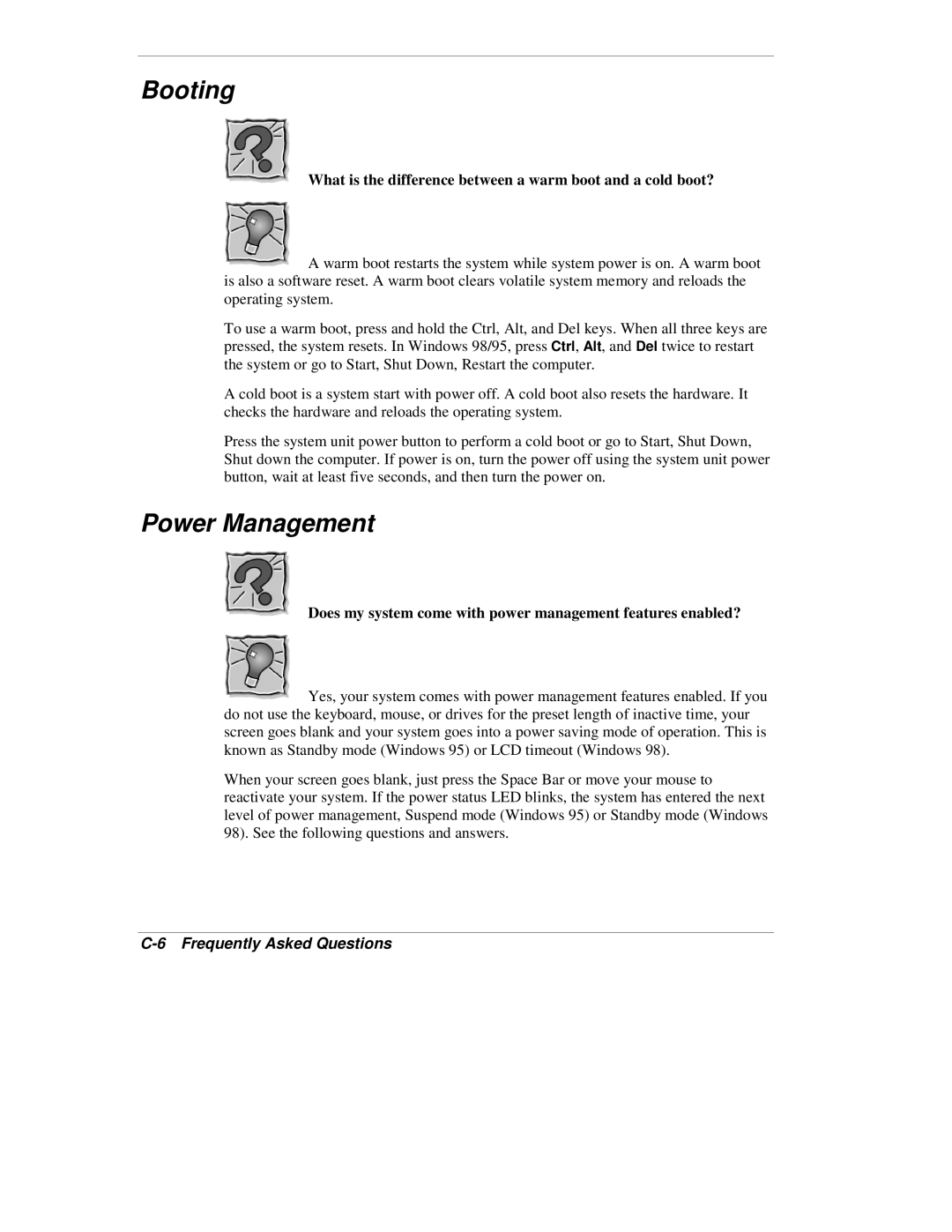
Booting
What is the difference between a warm boot and a cold boot?
 A warm boot restarts the system while system power is on. A warm boot is also a software reset. A warm boot clears volatile system memory and reloads the operating system.
A warm boot restarts the system while system power is on. A warm boot is also a software reset. A warm boot clears volatile system memory and reloads the operating system.
To use a warm boot, press and hold the Ctrl, Alt, and Del keys. When all three keys are pressed, the system resets. In Windows 98/95, press Ctrl, Alt, and Del twice to restart the system or go to Start, Shut Down, Restart the computer.
A cold boot is a system start with power off. A cold boot also resets the hardware. It checks the hardware and reloads the operating system.
Press the system unit power button to perform a cold boot or go to Start, Shut Down, Shut down the computer. If power is on, turn the power off using the system unit power button, wait at least five seconds, and then turn the power on.
Power Management
Does my system come with power management features enabled?
 Yes, your system comes with power management features enabled. If you do not use the keyboard, mouse, or drives for the preset length of inactive time, your screen goes blank and your system goes into a power saving mode of operation. This is known as Standby mode (Windows 95) or LCD timeout (Windows 98).
Yes, your system comes with power management features enabled. If you do not use the keyboard, mouse, or drives for the preset length of inactive time, your screen goes blank and your system goes into a power saving mode of operation. This is known as Standby mode (Windows 95) or LCD timeout (Windows 98).
When your screen goes blank, just press the Space Bar or move your mouse to reactivate your system. If the power status LED blinks, the system has entered the next level of power management, Suspend mode (Windows 95) or Standby mode (Windows 98). See the following questions and answers.
